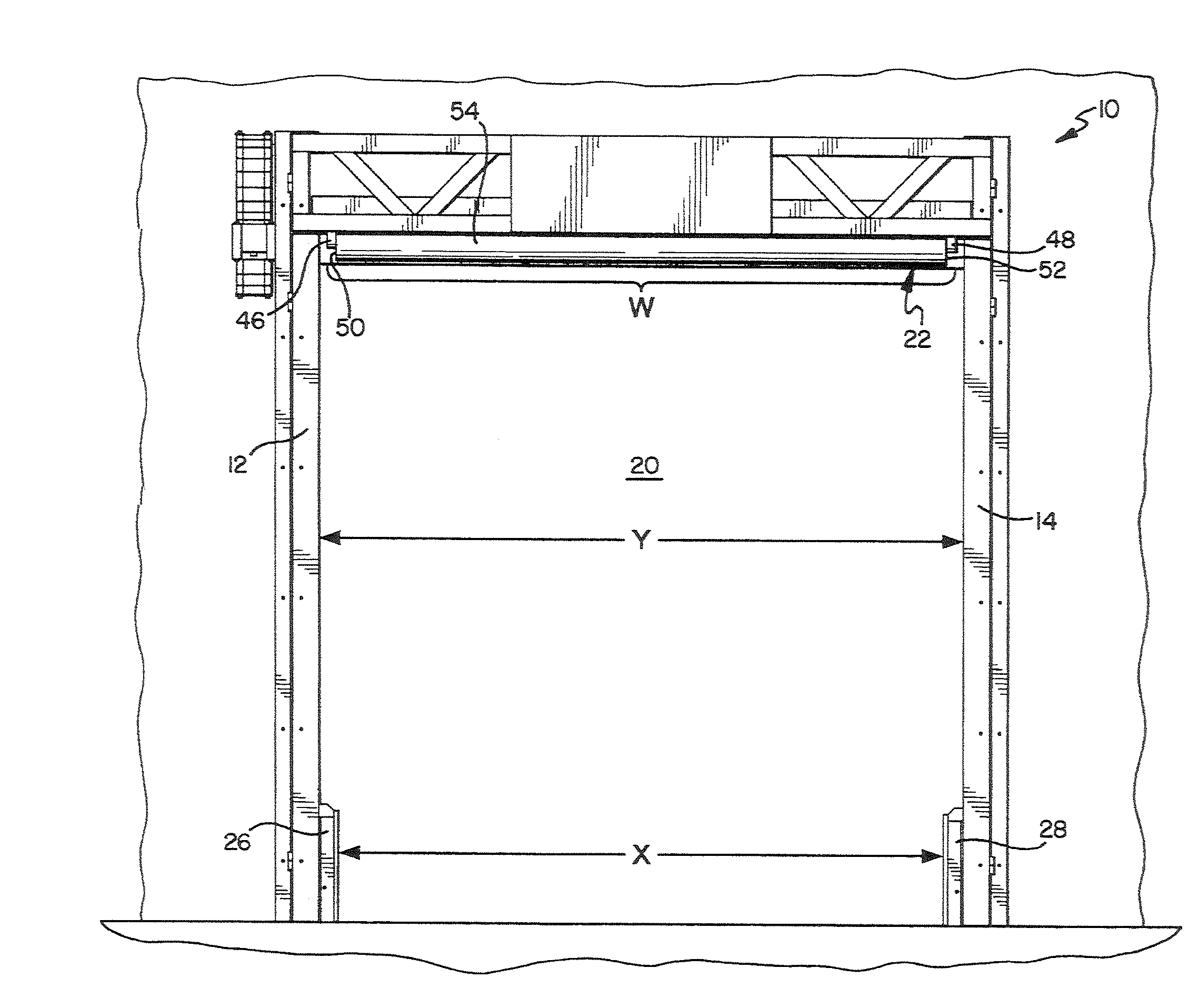Device and method for increasing the wind load resistance and disengage-ability of overhead roll-up doors
a technology for overhead roll-up doors and wind load resistance, which is applied in the direction of door/window protective devices, curtain suspension devices, shutters/movable grilles, etc., can solve the problems of increasing wind load, dramatically increasing the total load of doors, and increasing wind load, so as to increase the wind load resistance of overhead roll-up doors and enhance the ability of doors and their components to disengage. , the effect of increasing the wind load resistan
- Summary
- Abstract
- Description
- Claims
- Application Information
AI Technical Summary
Benefits of technology
Problems solved by technology
Method used
Image
Examples
Embodiment Construction
[0036]While the present invention is susceptible of embodiment in many different forms, there is shown in the drawings and will herein be described in detail, preferred embodiments of the invention with the understanding that the present disclosure is to be considered as an exemplification of the principles of the invention and is not intended to limit the broad aspect of the invention to the embodiments illustrated.
[0037]FIGS. 1, 2, and 6 show a door assembly 10 in a substantially open position, partially closed position, and substantially closed position, respectively. Door assembly 10 includes side columns 12, 14, flexible door panel 16, drum 18 for winding and unwinding flexible door panel 16 to permit and prohibit access to opening 20, bottom bar 22 attached proximate leading or bottom edge 24 of door panel 16, and bottom bar guides 26, 28 disposed proximate a lower portion of opening 20.
[0038]It is contemplated by the invention that bottom bar 22 may be any bottom bar structur...
PUM
| Property | Measurement | Unit |
|---|---|---|
| distance | aaaaa | aaaaa |
| width | aaaaa | aaaaa |
| width | aaaaa | aaaaa |
Abstract
Description
Claims
Application Information
 Login to View More
Login to View More - R&D
- Intellectual Property
- Life Sciences
- Materials
- Tech Scout
- Unparalleled Data Quality
- Higher Quality Content
- 60% Fewer Hallucinations
Browse by: Latest US Patents, China's latest patents, Technical Efficacy Thesaurus, Application Domain, Technology Topic, Popular Technical Reports.
© 2025 PatSnap. All rights reserved.Legal|Privacy policy|Modern Slavery Act Transparency Statement|Sitemap|About US| Contact US: help@patsnap.com



